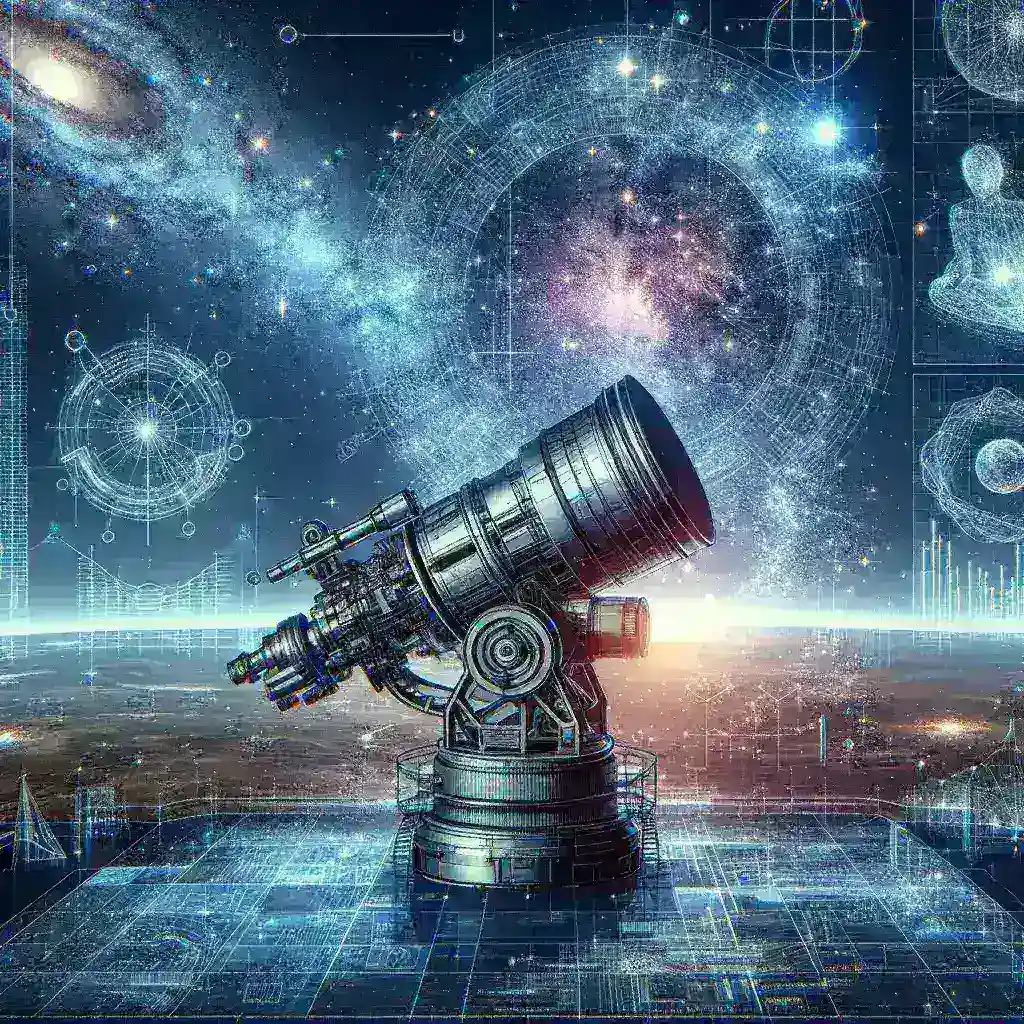
AI Enhanced Telescopes Mapping Cosmic Void Structures
Introduction
The universe is a vast and mysterious place, filled with wonders that challenge our understanding of physics and astronomy. One of the latest advancements in astrophysical research involves the use of AI enhanced telescopes, which are revolutionizing our ability to map cosmic void structures. These enormous, empty regions in the universe not only hold clues about the formation of galaxies but also provide insights into the fundamental nature of dark matter and dark energy.
Understanding Cosmic Voids
Cosmic voids are large, empty spaces between galaxies. They are a significant aspect of the large-scale structure of the universe, interconnected with filaments of galaxy clusters and superclusters. Understanding these voids is crucial for astrophysicists, as they can reveal information about the distribution of matter in the universe and the forces that shaped it.
The Role of AI in Astronomy
Artificial intelligence (AI) has transformed various fields, including healthcare, finance, and more recently, astronomy. In the realm of astrophysics, AI algorithms help process enormous datasets generated by telescopes. These algorithms can sort through data more quickly and efficiently than traditional methods, enabling astronomers to make discoveries at an unprecedented pace.
AI Enhanced Telescopes
AI enhanced telescopes utilize advanced machine learning techniques to analyze images and data collected from the cosmos. These telescopes are equipped with powerful imaging capabilities, allowing them to capture stunning details of celestial objects while simultaneously filtering out noise and irrelevant data.
Key Features of AI Enhanced Telescopes
- Automated Data Analysis: AI algorithms can automatically classify galaxies, identify patterns, and detect anomalies, making the research process more efficient.
- Deep Learning Capabilities: These telescopes use deep learning techniques to continuously improve their performance as they process more data.
- Real-time Observations: AI systems can provide real-time feedback to astronomers, helping them adjust their observations based on live data.
Mapping Cosmic Void Structures
Mapping cosmic voids involves analyzing the distribution of galaxies and dark matter within those voids. AI enhanced telescopes can perform this task with remarkable precision. By utilizing machine learning algorithms, researchers can identify voids and their boundaries, which are often difficult to discern through traditional observational methods.
Steps in Mapping Cosmic Voids
1. Data Collection
The first step in mapping cosmic voids involves gathering data from various telescopes around the world. This data includes images and spectral information from galaxies situated both within and outside of the voids.
2. Image Processing
Once data is collected, AI algorithms process the images to enhance clarity and remove noise. This step is critical, as cosmic observations often come with significant background noise.
3. Void Identification
Using advanced pattern recognition techniques, AI systems identify the locations and boundaries of cosmic voids. This process involves analyzing the density of galaxies across vast regions of space.
4. Data Visualization
AI tools can create detailed visualizations of voids, showcasing their structure and distribution in relation to surrounding galaxies. This visualization aids scientists in understanding the complex relationships between voids and galaxy formation.
Historical Context
Historically, the study of cosmic voids has evolved alongside advancements in technology. Early observations were limited by the resolutions of telescopes and the lack of sophisticated data analysis tools. The introduction of computer-aided design in astronomy marked a turning point, allowing for more precise calculations and observations.
Future Predictions
As AI technology continues to evolve, we can expect even greater advancements in the mapping of cosmic voids. Future telescopes may incorporate more sophisticated AI systems, capable of handling increasingly complex datasets and performing real-time analyses on a cosmic scale.
Pros and Cons of AI Enhanced Telescopes
Pros
- Efficiency: AI enhances the speed and accuracy of data analysis.
- Discovery Potential: New algorithms can lead to groundbreaking discoveries by uncovering patterns that may have been overlooked.
- Cost-effective: By automating labor-intensive processes, AI can reduce the costs associated with astronomical research.
Cons
- Dependence on Technology: Over-reliance on AI could lead to gaps in understanding if human intuition is sidelined.
- Data Bias: AI algorithms could perpetuate existing biases in data interpretation if not properly managed.
Real Examples of AI in Action
Several notable projects have demonstrated the power of AI in mapping cosmic void structures. The Dark Energy Survey (DES), for example, has utilized machine learning techniques to analyze galaxy clustering within cosmic voids, revealing critical insights into the effects of dark energy on universe expansion.
Cultural Relevance
The exploration of cosmic structures is not only a scientific endeavor but also a cultural one, captivating the imagination of millions worldwide. AI enhanced telescopes have made it possible to share these discoveries with a broader audience through stunning visualizations and interactive models.
Conclusion
The advent of AI enhanced telescopes marks a significant milestone in our quest to understand the universe. By mapping cosmic void structures with unprecedented accuracy, we are unlocking secrets that have baffled scientists for generations. As technology continues to advance, the potential for new discoveries will only increase, paving the way for deeper insights into the nature of our cosmos.


Leave a Comment